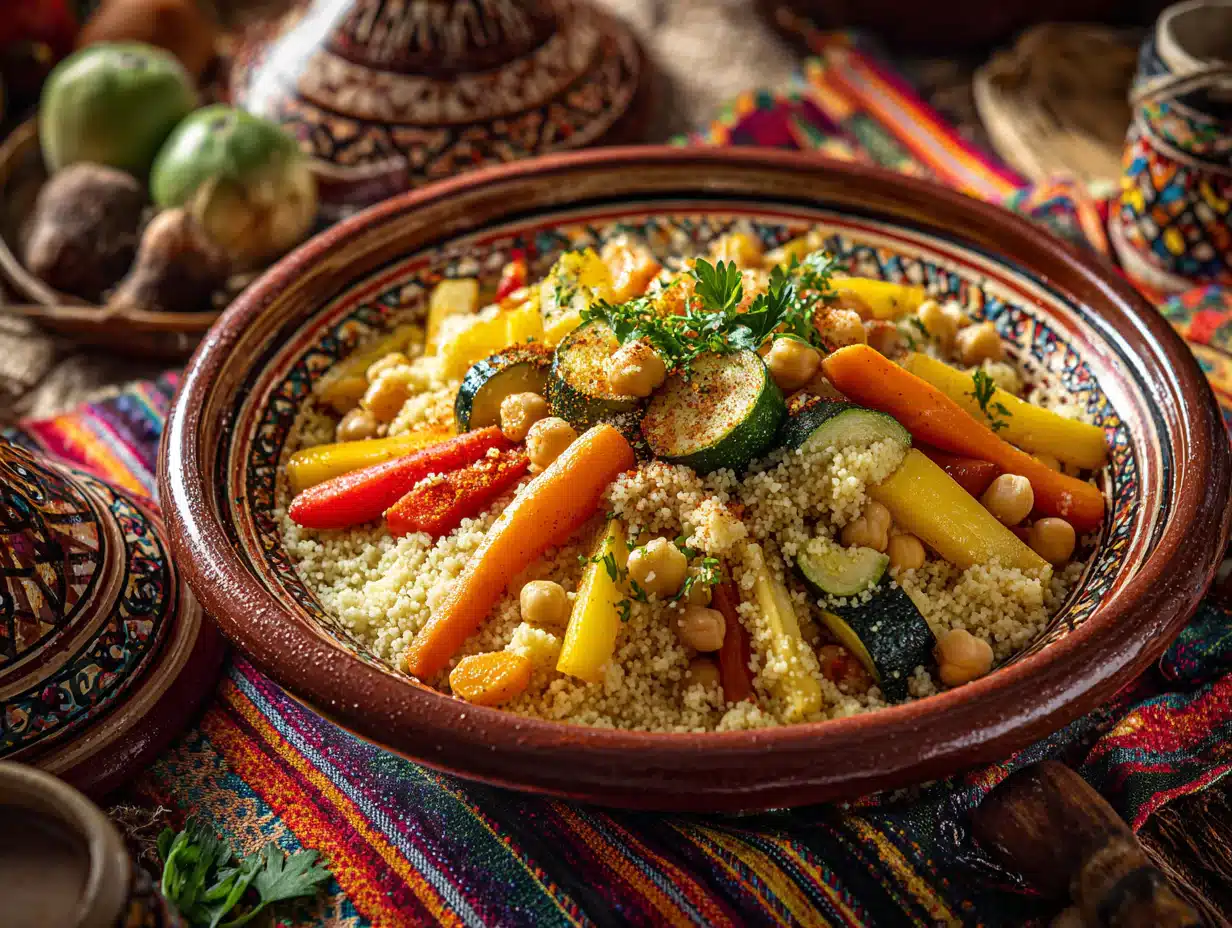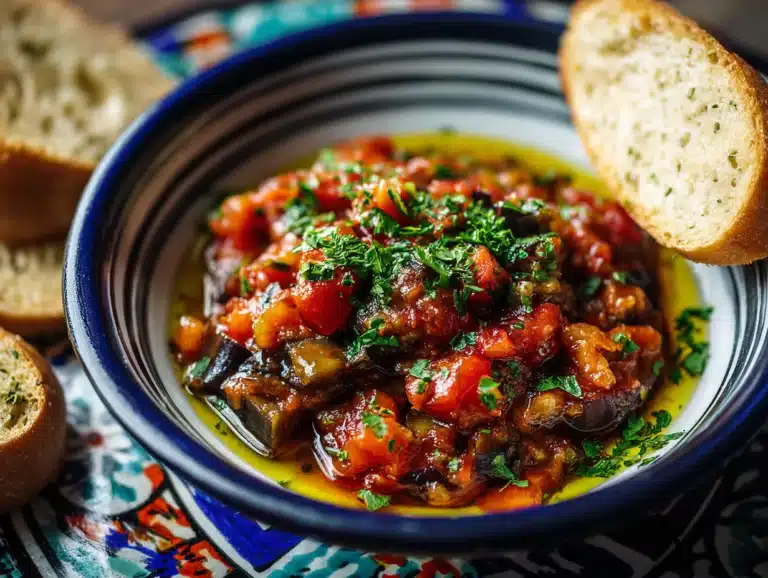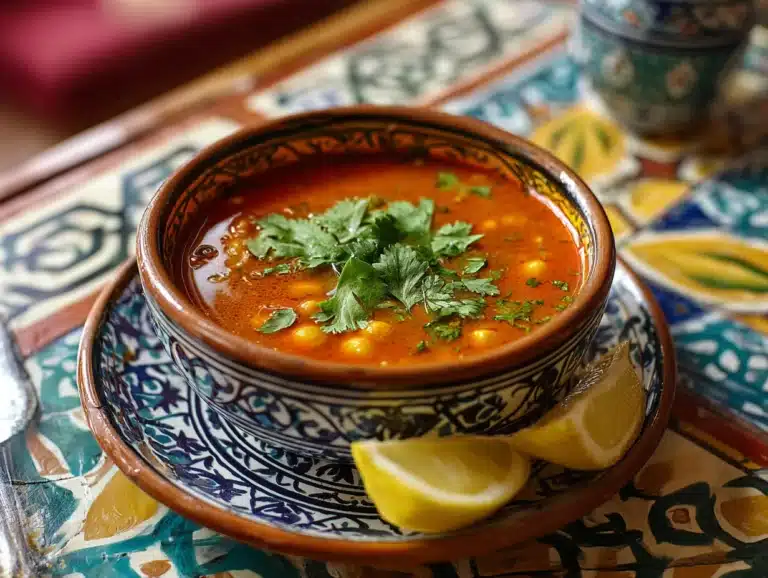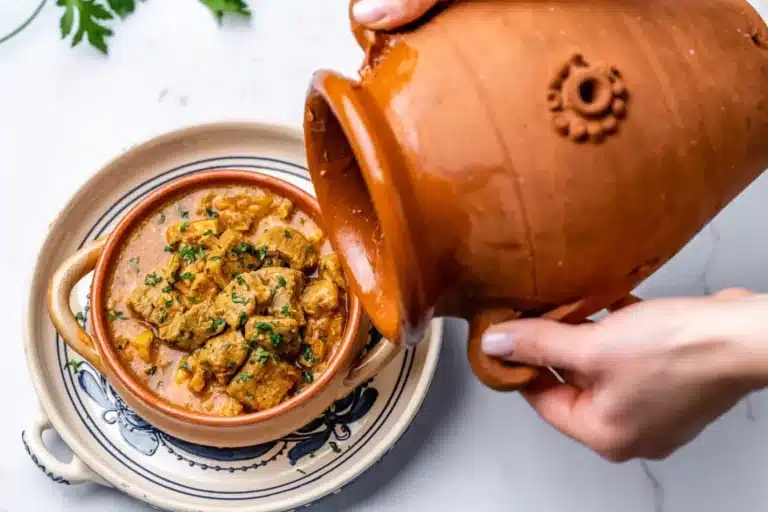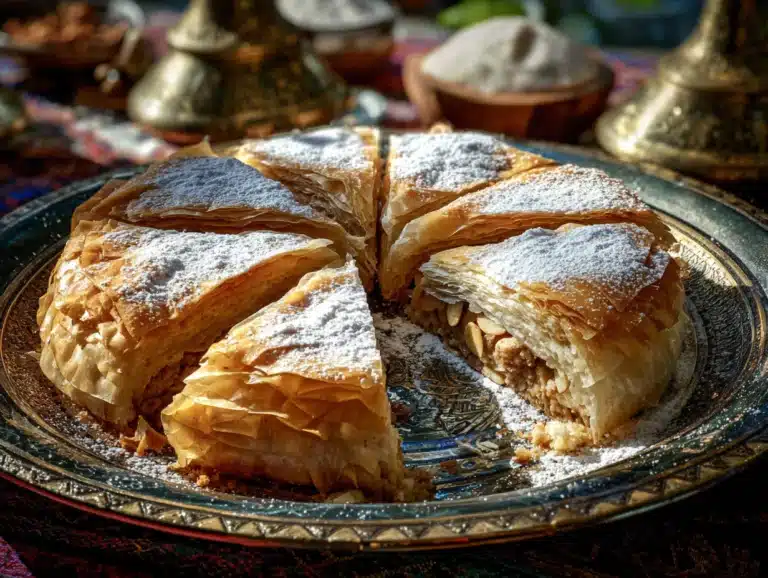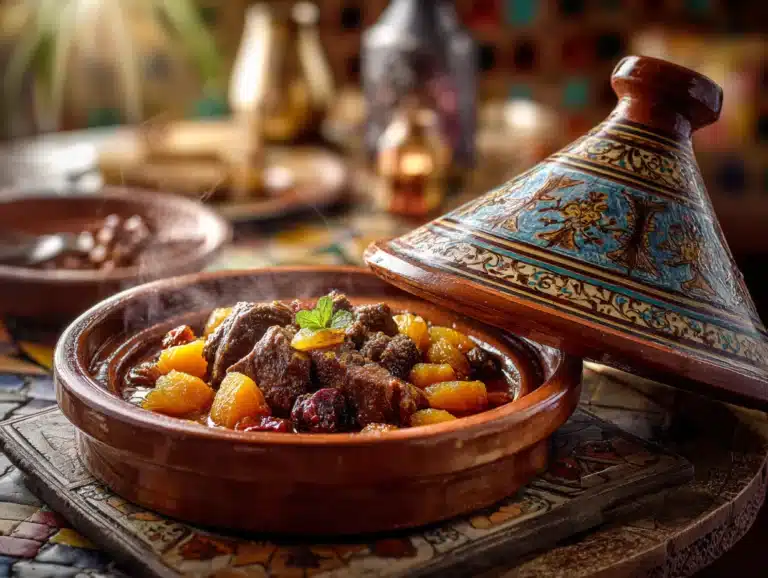Moroccan Couscous: A Delicious Traditional Recipe in 6 Steps
Couscous is Morocco’s beloved national dish, featuring fluffy semolina grains steamed to perfection and served with tender vegetables and aromatic spices. This traditional Moroccan couscous recipe delivers authentic flavors that have been passed down through generations, creating a hearty meal that’s both nutritious and deeply satisfying.
Overview of Moroccan Cuisine
Moroccan cuisine represents a rich tapestry of flavors influenced by Berber, Arab, Mediterranean, and French culinary traditions. The foundation of Moroccan cooking lies in its masterful use of spices like cumin, coriander, cinnamon, and ginger, creating complex flavor profiles that transform simple ingredients into extraordinary dishes.
What is couscous made of? Traditional couscous consists of tiny granules made from semolina wheat flour and water, rolled by hand and dried. This ancient grain preparation method has remained virtually unchanged for centuries, making couscous not just a meal but a connection to Morocco’s culinary heritage.
The preparation of couscous requires patience and technique, traditionally steamed in a special pot called a couscoussier. The result is light, fluffy grains that absorb the flavors of accompanying vegetables, meat, and aromatic broth.
Best Time to Cook This Dish
Couscous holds special significance as Morocco’s traditional Friday meal, when families gather after weekly prayers to share this communal dish. The preparation often begins early in the day, allowing time for the slow cooking process that develops deep, complex flavors.
Seasonal considerations make couscous particularly appealing during cooler months when hearty, warming meals are most welcome. However, lighter vegetable versions work beautifully in spring and summer, showcasing seasonal produce like zucchini, carrots, and fresh herbs.
Religious holidays and celebrations often feature elaborate couscous preparations, with special ingredients like lamb, chicken, or dried fruits added to mark the occasion’s importance.
Cultural Significance of Couscous
In Moroccan culture, couscous represents much more than sustenance it embodies community, hospitality, and tradition. The dish traditionally brings families together around a shared platter, eaten with the right hand in the traditional manner.
The preparation ritual itself holds cultural importance. Traditionally, women of the household would gather to hand-roll the couscous grains, a practice that strengthened social bonds and passed culinary knowledge between generations. While modern cooks often use pre-made couscous, understanding this heritage adds depth to the cooking experience.
Couscous appears in Moroccan proverbs and folklore, symbolizing abundance and blessing. Serving couscous to guests demonstrates respect and hospitality, core values in Moroccan society.
Ingredients Needed
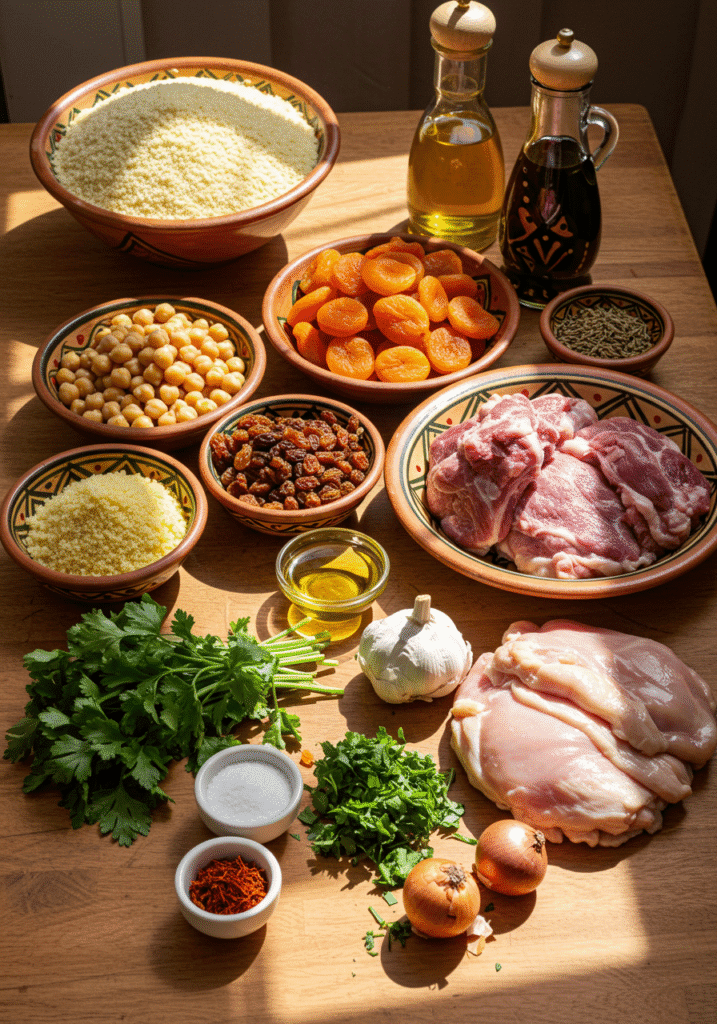
For the Couscous Grains:
- 2 cups medium-grain couscous
- 2 tablespoons olive oil
- 1 teaspoon salt
- 2 cups warm water
For the Vegetable Stew:
- 1 large onion, quartered
- 3 large carrots, cut into chunks
- 2 zucchini, cut into pieces
- 1 small cabbage, quartered
- 1 cup pumpkin or butternut squash, cubed
- 1 cup chickpeas (soaked overnight)
- 2 tomatoes, quartered
Spice Blend (Ras el Hanout):
- 1 teaspoon ground ginger
- 1 teaspoon ground turmeric
- 1 teaspoon ground cinnamon
- 1 teaspoon ground cumin
- 1/2 teaspoon ground coriander
- 1/2 teaspoon black pepper
- 1/4 teaspoon ground cloves
Additional Ingredients:
- 4 cups vegetable or chicken broth
- 2 tablespoons tomato paste
- 3 tablespoons olive oil
- Fresh cilantro and parsley for garnish
- Salt to taste
Substitution options for international cooks include replacing traditional vegetables with locally available alternatives like turnips, sweet potatoes, or green beans. The key is maintaining a variety of colors and textures.
Step-by-Step Instructions
Preparing the Couscous:
- Initial preparation: Place couscous in a large bowl and add olive oil and salt. Rub the grains with your hands to coat evenly with oil.
- First steaming: Add warm water gradually while stirring to prevent lumps. Let stand for 10 minutes until water is absorbed.
- Breaking up clumps: Use your fingers to break apart any clumps, ensuring individual grains remain separate.
- Steam cooking: Place couscous in the top section of a couscoussier or steamer basket. Steam for 20 minutes over boiling water.
Preparing the Vegetable Stew:
- Aromatics base: Heat olive oil in the bottom of the couscoussier or large pot. Add onions and cook until translucent.
- Spice activation: Add tomato paste and spice blend, stirring for 1 minute to release fragrant oils.
- Building layers: Add broth, chickpeas, and harder vegetables like carrots and pumpkin first. Bring to a boil.
- Gentle simmering: Reduce heat and simmer for 15 minutes before adding softer vegetables like zucchini and tomatoes.
Final Assembly:
- Second steaming: Remove couscous from steamer, add a little warm broth to moisten, and steam again for 15 minutes.
- Final seasoning: Taste and adjust salt in both couscous and vegetable stew.
- Traditional presentation: Mound couscous on a large platter, creating a well in the center for the vegetables and broth.
Cooking Tips & Tricks
Achieving perfect texture requires proper steaming technique. Never let the couscous touch the boiling water directly steam should cook the grains, not direct contact with liquid.
Flavor enhancement comes from using flavorful broth instead of plain water when moistening the couscous. This infuses the grains with additional taste layers.
Preventing sticking involves proper oiling of grains before cooking and gentle handling throughout the process. Over-mixing can create a gummy texture.
Traditional technique suggests steaming couscous three times for ultimate fluffiness, though twice often suffices for home cooking.
Vegetable timing is crucial add vegetables in order of cooking time needed, starting with root vegetables and finishing with delicate items like tomatoes and herbs.
Serving Suggestions
Traditional Moroccan couscous pairs beautifully with harissa paste on the side, allowing diners to adjust heat levels to their preference. A small bowl of the cooking broth should accompany the dish for additional moisture.
Complementary beverages include Moroccan mint tea (atay), which aids digestion and provides a refreshing contrast to the rich, spiced flavors. Fresh orange juice or traditional buttermilk also work well.
Additional accompaniments might include preserved lemons, olives, or a simple salad of tomatoes and onions dressed with olive oil and lemon juice.
For special occasions, consider adding protein options like grilled lamb, chicken, or merguez sausage served alongside the vegetarian base.
Storage & Leftovers
Proper storage involves keeping couscous and vegetable stew separate in the refrigerator for up to 3 days. This prevents the grains from becoming too soft from continued moisture exposure.
Reheating techniques work best when you add a little warm broth or water to the couscous before gentle reheating in a steamer or microwave. Cover to prevent drying out.
Freezing options work well for the vegetable stew (up to 3 months) but couscous grains don’t freeze successfully due to texture changes.
Creative repurposing transforms leftover couscous into salads by adding fresh herbs, diced vegetables, and a lemon vinaigrette for a completely different meal.
Common FAQs
Is couscous healthy?
Yes, couscous provides complex carbohydrates, protein, and fiber. When served with vegetables, it creates a nutritionally balanced meal rich in vitamins and minerals.
How to cook couscous properly?
The key is proper steaming rather than boiling. This maintains the grain’s texture and prevents mushiness.
What is the difference between regular and pearl couscous?
Traditional couscous consists of tiny granules, while pearl couscous (Israeli couscous) features larger, round balls with a different texture and cooking method.
Can I make couscous without a couscoussier?
Yes, use a steamer basket over a large pot, ensuring the couscous doesn’t touch the water directly.
What spices are essential for Moroccan couscous?
The basic blend includes ginger, turmeric, cinnamon, and cumin, though ras el hanout (a complex spice mixture) provides the most authentic flavor.
Conclusion
This traditional Moroccan couscous recipe connects you to centuries of culinary heritage while providing a nutritious, satisfying meal for modern tables. The combination of perfectly steamed grains, aromatic vegetables, and warm spices creates a dish that nourishes both body and soul.
Ready to experience authentic Moroccan flavors? Try this couscous recipe today and discover why it remains Morocco’s most beloved dish. Share your cooking experience and subscribe to our newsletter for more traditional Moroccan recipes that bring the flavors of North Africa to your kitchen.
Recipe Card Summary:
- Prep Time: 30 minutes
- Cook Time: 45 minutes
- Total Time: 1 hour 15 minutes
- Servings: 6-8 people
- Difficulty: Intermediate
- Cuisine: Moroccan
- Diet: Vegetarian (easily adaptable to vegan)
For more authentic Moroccan recipes, explore our tagine collection and Moroccan desserts sections.

